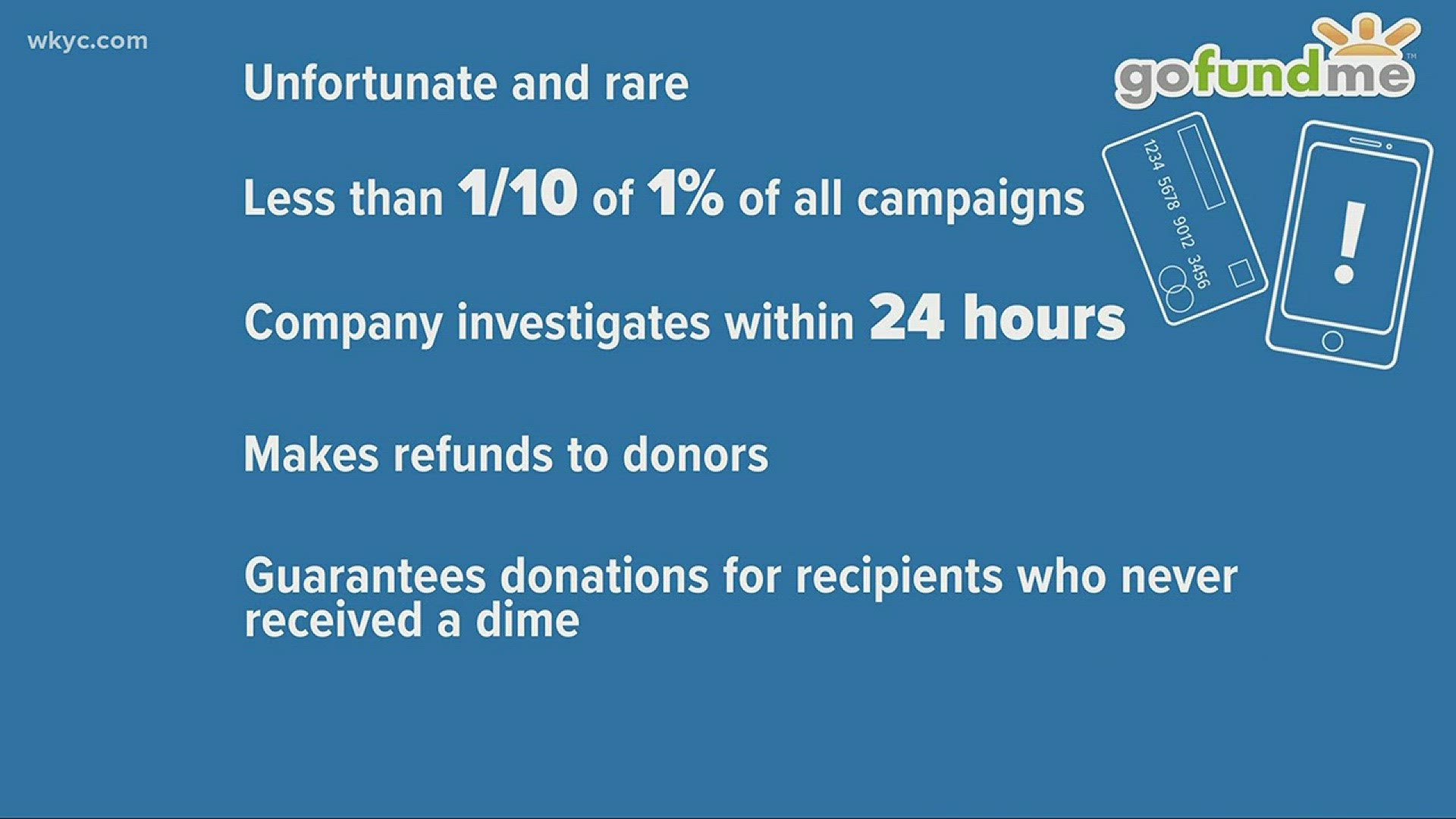From phony funerals to fake cancer, there is a dark side to crowdfunding that can turn generous donors into victims of fraud.
It makes Krystal Zuniga angry.
"To me, that's very sickening, very disturbing," she said.
Her father, Francisco Zuniga, has lymphoma and the family's medical bills are piling up. The cost of chemotherapy has topped thirty-thousand-dollars.
"People die from not having medicine. But there are good people with good hearts who donate," said Francisco, through a translator.
The family turned to the crowdfunding website, Go Fund Me, to raise money.
"Go Fund Me has been a blessing. An opportunity for us to get out of this," Krystal said.
But dishonest people see Go Fund Me campaigns as a way to prey on people's emotions and to get their money.
"When I hear that, it's very sickening. Very disturbing," said Krystal.
Fake campaigns like that of Amie Welch, who along with her husband claimed she had stage three cervical cancer.
And frustration echoed by the family of Robert Godwin Sr., the Cleveland man murdered on Easter Sunday 2017 by Steve Stevens.
Not long after his death, Godwin's family reported fake fundraising campaigns, playing off their personal tragedy.
Enter Adrienne Gonzalez, an outspoken blogger with her own website Go Fraud Me, which tracks bogus fundraising campaigns nationwide.
"This is happening a lot. It's happening in your backyard. It's happening in mine," said Gonzalez.
She breaks down the fraud into several categories. "Animals, children, anything that's kind of an extra sob story, or meant to tug at your heart. People need to be careful," Gonzalez said.
So how can you be careful?
Try doing what Gonzalez did with Sprocket, a dog that supposedly had degenerative disc disease.
"So you put the photo into Google images at images.google.com. And Google will tell you that the image appears here, here, here and here," said Gonzalez, proving that Sprocket's picture was indeed swiped off the internet.
In addition to the Godwin case, Gonzalez is tracking others around Ohio. "I think people need to be really, really careful after any tragedy. Every time something bad happens, these people come out of the woodwork," she said.
Go Fund Me calls these bogus campaigns "unfortunate and rare," saying they represent less than one-tenth of one percent of all campaigns. The company also said it investigates claims within 24 hours, makes refunds to donors and guarantees donations for intended recipients who never received any money.
So how can you spot a fake fundraising campaign? Here are a few suggestions:
- Check credentials: Many crowdfunding sites verify that the person has a Facebook page, but anyone can make one. Take a few minutes to analyze the Facebook page. Are the friends real? Is there a long history of real-time comments? Does the person have just one social media site or are they listed on other sites? A short timeline might indicate that the page was created just before asking for funding.
- Be suspicious: Is the person trying to fund the same project on multiple crowd-sourcing sites? That could show an attempt to raise as much money from as many people as possible.
- Check pictures: A good tool is Google Reverse Image Search. If a social media account looks a little perfect, run a search on their pictures to determine the origin.

